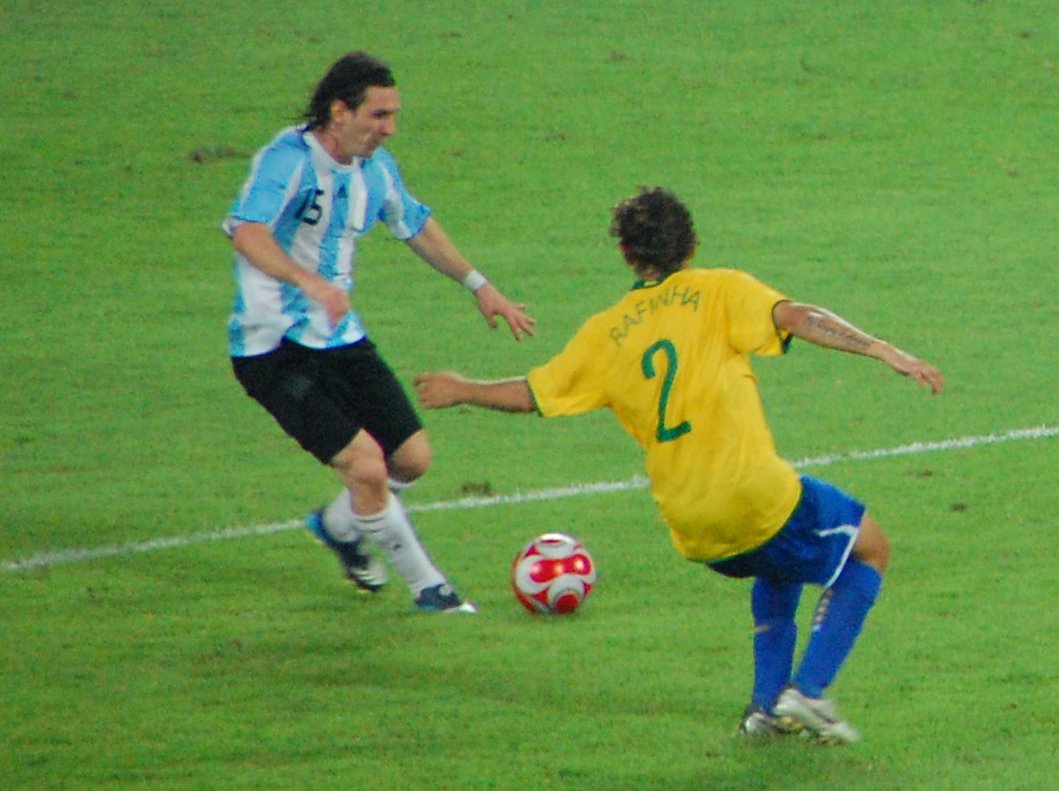Football positions
How much do you know about football or soccer? Do you know that the players positions in the field may change from match to match? How the players are positioned in the pitch is determined by the coach, taking into consideration the strengths and weaknesses of the team's players in relation to the opponent's team.
The different strategies used are normally known by numbers, e.g. 4-4-2 or 5-3-2. These numbers give the idea of how many players are located in the defense, the midfield and the forward area.
Tactically organized teams can beat teams with better players. Teams often lose not due to the lack of effort or technical ability but because of lack of organization or not getting the best from the players they have.
The following images show some football formations:
A bit of history
In the football matches of the 19th century defensive football was
not played, and the line-ups reflected the all-attacking nature of these
games.
In the first international game, Scotland against England on 30 November 1872, England played with seven or eight forwards in a
1–1–8 or 1–2–7 formation, and Scotland with six, in a 2–2–6 formation.
The 2–3–5 was originally known as the "Pyramid", with the numerical
formation being referenced retrospectively. By the 1890s, it was the
standard formation in England and had spread all over the world. With
some variations, it was used by most top level teams up to the 1940s. It was this formation which gave rise to the convention of shirt numbers.
The Danubian School of football is a modification of the 2–3–5 formation
in which the centre forward plays in a more withdrawn position.
The Metodo was devised by Vittorio Pozzo, coach of the Italian national team in the 1930s.
It was a derivation of the Danubian School. The system was based on the
2–3–5 formation, Pozzo realised that his half-backs would need some
more support in order to be superior to the opponents' midfield, so he
pulled two of the forwards to just in front of midfield, creating a
2–3–2–3 formation. This created a stronger defence than previous
systems, as well as allowing effective counter-attacks.
Other systems were devised in order to improve the game, such as the WM, the WW, the 3-3-4, the 4-2-4, etc.
In modern football the formations are flexible allowing tailoring to the needs of a team,
as well as to the players available. Variations of any given formation
include changes in positioning of players, as well as replacement of a
traditional defender by a sweeper.
Some positions explained
The 4-4-2 is a very common formation. This formation was the most common in football in the 1990s and early 2000s. With four defenders four
midfielders and two strikers it is a very stable formation. Famous teams
that used the 4-4-2 formation are AC Milan of the late 1980s and early
1990s and recently Manchester United.
The 4-4-1-1 formation is a variation of 4–4–2 with one of the strikers playing "in the hole", or as a "second striker", slightly behind their partner.
The second striker is generally a more creative player, the playmaker,
who can drop into midfield to pick up the ball before running with it or
passing to team-mates.
The 5-3-2 formation is a very defensive formation, having five defenders three midfielders and two strikers.
This formation has three central defenders (possibly with one acting as a sweeper)
This system is heavily reliant on the wing-backs providing width for
the team. The two wide full-backs act as wing-backs. It is their job to
work their flank along the full length of the pitch, supporting both the
defence and the attack
If you are interested in getting more information about the different formations, you can visit the links below.
Football formation.com
Wikipedia.org
Wikipedia.org
Wikipedia.org
Wikipedia.org
Soccerlens.com
You can check how much you know about football players positions with the following crossword:
Football players
How well do you know the players positions in football?

.png/220px-Metodo_(ENG).png)
 Logging you in...
Logging you in...




Yandere Installer · 186 weeks ago